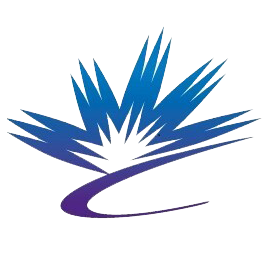Could zebrafish hold clues to detecting, preventing scoliosis in children and teens?
Researchers at SickKids / University of Toronto show curvature, stiffness in fish spine predictive of scoliosis
By Colleen MacPhersonDr. Brian Ciruna had no intention of studying scoliosis, a condition that causes unnatural curvature of the spine. However, the unexpected discovery about a decade ago that zebrafish also develop curved spines left him wondering what was causing the spine to bend and whether there was some connection to the human form of the disease. It turns out that this small, minnow-like fish has a lot to tell researchers about a condition that affects three to four percent of children and young teens in Canada.
Despite its prevalence, we know very little about the underlying causes of scoliosis in humans, says Ciruna, Senior Scientist and Head of the Developmental and Stem Cell Biology Program at the Hospital for Sick Children (SickKids) in Toronto and professor in the Department of Molecular Genetics at the University of Toronto. Zebrafish, it turns out, have human-like backbones, making them an excellent model for this research.
In their latest research, published in Nature Communications, Ciruna and his team used special imaging techniques at the Canadian Light Source (CLS) at the University of Saskatchewan to create a high-resolution, 3D map of the curved fish spines, and noted they act very much like human spines as scoliosis worsens. Their imaging showed deformations and increased stiffness in the spinal structures, which are also observed in human patients, says Ciruna. “It’s prognostic. Based on stiffness, we were able to predict which fish would develop scoliosis.” This finding is important, because there currently are no genetic biomarkers to suggest which children will develop a severe form of the disease.
Right now, says Ciruna, “children and families have to wait” to see how the curvature progresses and then contend with bracing or invasive surgery as treatment. A biomarker like stiffness could lead to early intervention, and an ongoing clinical study at SickKids is attempting to determine if the theory is valid, says Ciruna.
Earlier research by the team at SickKids had shown that inflammatory and oxidative stress -- an imbalance between free radicals and antioxidants in the body -- seems to drive spinal curvature in zebrafish. There are many questions left to answer, says Ciruna, including whether environmental factors such as diet, exercise, infection, and gut biome may create oxidative stress and ultimately scoliosis, and the possible effectiveness of antioxidant therapy in humans. “But these are pre-clinical models that we’re dealing with right now.”
Ciruna and his colleagues view it as a luxury to have access to CLS technology to advance their study of a condition that “is so common it gets overlooked." “The eventual development of a non-invasive treatment for the underlying cause of scoliosis could be transformative.”
--
Pumputis, P.G., Xu, R., Gopaul, J. et al. Oxidative stress-induced intervertebral disc remodelling and elevated stiffness drive idiopathic scoliosis in preclinical models. Nat Commun 16, 8719 (2025). https://doi.org/10.1038/s41467-025-63742-2
Access images and B-roll related to this research
Media Relations:
Greg Basky
Communications Coordinator
Canadian Light Source
306-370-9446
greg.basky@lightsource.ca
